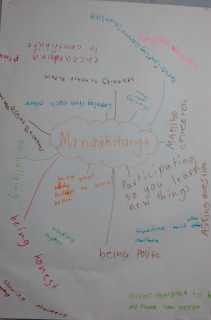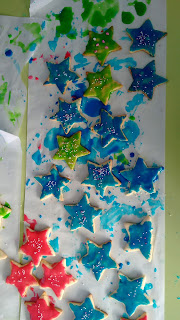At U learn Conference this year, I have been very inspired by the 6 C's.
Here is a brief description of what 6 C's stand for and how they are so important in education. This write up is also a reflection on how I will be developing my plans so that I create a space for all the C's into my lessons.
Thinking Critically- This is done the best when students have a variety of media to inform themselves about the topic. It allows students to analyse and filter the information and eventually form their own opinion based on the facts and information received. They weigh the positive and negative affects of the information. It also allows students to think if the information is valid or is it biased. They make connections with their experiences and understand the topic deeply.
How can I plan to make this happen in my class?
Working Collaboratively - When students work collaboratively, they communicate to make an optimum outcome. In the process, everyone's ideas are valued.
How can I maximise the success by making communication effective in my class? What are the most effective means of communication when working collaboratively?
Communicating Clearly - This means that students and Teachers need to communicate meaningfully. This will happen if communication is effective and engaging to the classroom audience.
How can I make communication purposeful and effective for my students? How can I encourage engagement within the students? Do my students need to develop their communication skills?
Embrace Culture - Students become more engaged in their learning if teachers encourage and appreciate the cultures of their students.
How can I become more responsive to the culture of the community I teach? How can I include the members of the community to become a part of my classroom culture?
Develop Creativity - Creativity allows students to express their learning and share it with others. Just learning would not be of any value if students are not able to apply their new learning in a purposeful way. When students apply their knowledge to create something, they gain deeper understanding, their knowledge expands, possibilities of innovations arise, imagination happens and their is a sense of completeness to the learning.
How can I bring more creativity into the topics I teach?
Utilise Connectivity - This allows students to share their learning with the wider community. It is important because it allows students to have authentic audience to get constructive feedback.
How can I use Technology to connect at the local and global platform about my learning?
Reflection - On reflection I feel the need to plan my lessons very carefully keeping in mind the 6 Cs. Though I already plan under the umbrella of 'Learn, Create, share', but sometimes the essence and richness of the learning experiences can get lost if emphasis and care is not devoted to the 6 C's. For this to happens effectively, I need to set up norms in the beginning of the year where students will learn how to communicate and collaborate so that we get more engagement through richer discussions. I will need them to learn to embrace each others cultures and value each other's ideas and communicate respectfully so that the outcome of each lesson is acceptable and workable for the community.






































